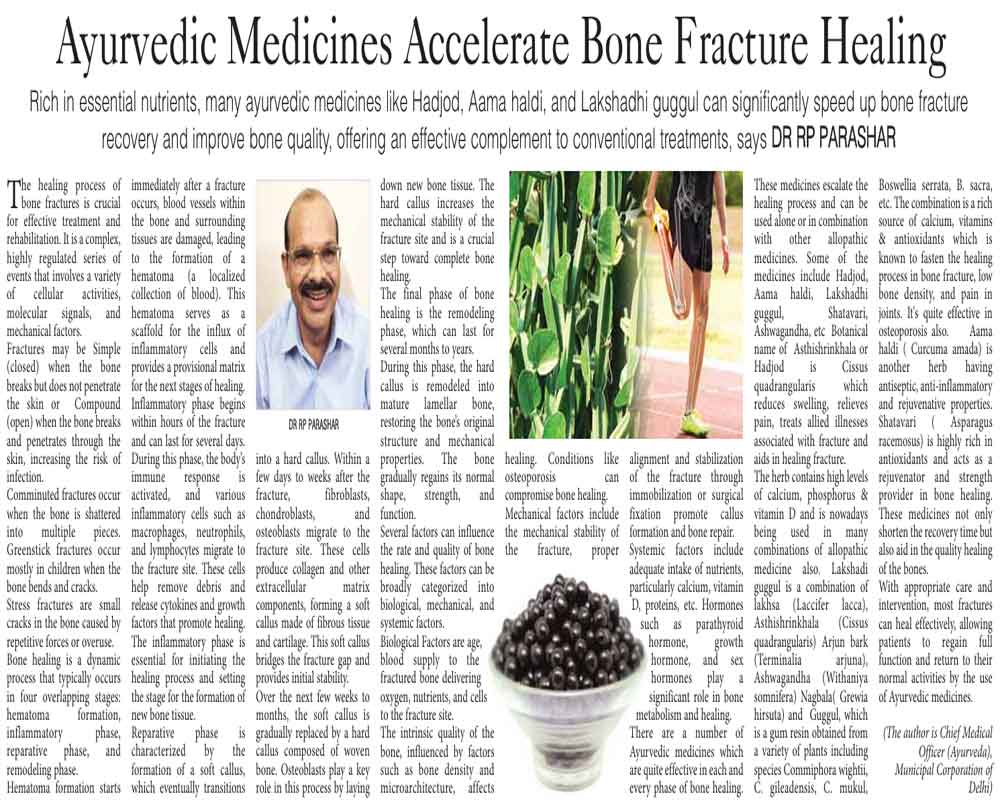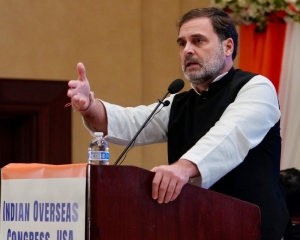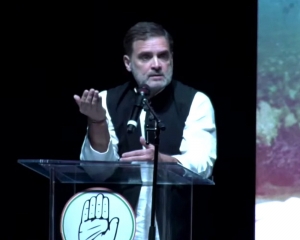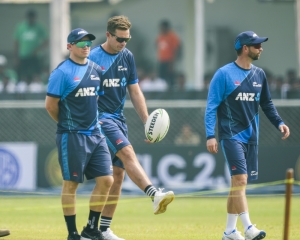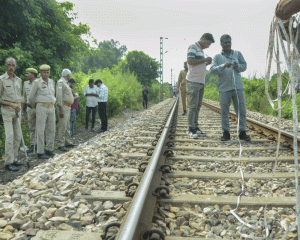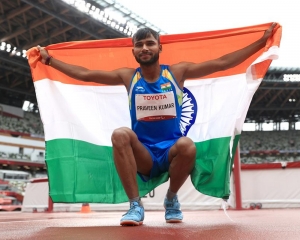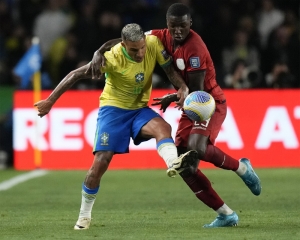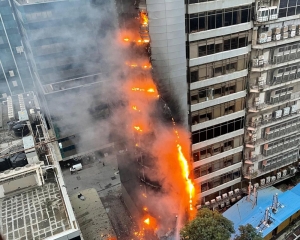Rich in essential nutrients, many ayurvedic medicines like Hadjod, Aama haldi, and Lakshadhi guggul can significantly speed up bone fracture recovery and improve bone quality, offering an effective complement to conventional treatments, says Dr RP Parashar
The healing process of bone fractures is crucial for effective treatment and rehabilitation. It is a complex, highly regulated series of events that involves a variety of cellular activities, molecular signals, and mechanical factors.
Fractures may be Simple (closed) when the bone breaks but does not penetrate the skin or Compound (open) when the bone breaks and penetrates through the skin, increasing the risk of infection.
Comminuted fractures occur when the bone is shattered into multiple pieces. Greenstick fractures occur mostly in children when the bone bends and cracks.
Stress fractures are small cracks in the bone caused by repetitive forces or overuse.
Bone healing is a dynamic process that typically occurs in four overlapping stages: hematoma formation, inflammatory phase, reparative phase, and remodeling phase.
Hematoma formation starts immediately after a fracture occurs, blood vessels within the bone and surrounding tissues are damaged, leading to the formation of a hematoma (a localized collection of blood). This hematoma serves as a scaffold for the influx of inflammatory cells and provides a provisional matrix for the next stages of healing.
Inflammatory phase begins within hours of the fracture and can last for several days. During this phase, the body’s immune response is activated, and various inflammatory cells such as macrophages, neutrophils, and lymphocytes migrate to the fracture site. These cells help remove debris and release cytokines and growth factors that promote healing. The inflammatory phase is essential for initiating the healing process and setting the stage for the formation of new bone tissue.
Reparative phase is characterized by the formation of a soft callus, which eventually transitions into a hard callus. Within a few days to weeks after the fracture, fibroblasts, chondroblasts, and osteoblasts migrate to the fracture site. These cells produce collagen and other extracellular matrix components, forming a soft callus made of fibrous tissue and cartilage. This soft callus bridges the fracture gap and provides initial stability.
Over the next few weeks to months, the soft callus is gradually replaced by a hard callus composed of woven bone. Osteoblasts play a key role in this process by laying down new bone tissue. The hard callus increases the mechanical stability of the fracture site and is a crucial step toward complete bone healing.
The final phase of bone healing is the remodeling phase, which can last for several months to years.
During this phase, the hard callus is remodeled into mature lamellar bone, restoring the bone’s original structure and mechanical properties. The bone gradually regains its normal shape, strength, and function.
Several factors can influence the rate and quality of bone healing. These factors can be broadly categorized into biological, mechanical, and systemic factors.
Biological Factors are age, blood supply to the fractured bone delivering oxygen, nutrients, and cells to the fracture site.
The intrinsic quality of the bone, influenced by factors such as bone density and microarchitecture, affects healing. Conditions like osteoporosis can compromise bone healing.
Mechanical factors include the mechanical stability of the fracture, proper alignment and stabilization of the fracture through immobilization or surgical fixation promote callus formation and bone repair.
Systemic factors include adequate intake of nutrients, particularly calcium, vitamin D, proteins, etc. Hormones such as parathyroid hormone, growth hormone, and sex hormones play a significant role in bone metabolism and healing.
There are a number of Ayurvedic medicines which are quite effective in each and every phase of bone healing. These medicines escalate the healing process and can be used alone or in combination with other allopathic medicines. Some of the medicines include Hadjod, Aama haldi, Lakshadhi guggul, Shatavari, Ashwagandha, etc Botanical name of Asthishrinkhala or Hadjod is Cissus quadrangularis which reduces swelling, relieves pain, treats allied illnesses associated with fracture and aids in healing fracture.
The herb contains high levels of calcium, phosphorus & vitamin D and is nowadays being used in many combinations of allopathic medicine also. Lakshadi guggul is a combination of lakhsa (Laccifer lacca), Asthishrinkhala (Cissus quadrangularis) Arjun bark (Terminalia arjuna), Ashwagandha (Withaniya somnifera) Nagbala( Grewia hirsuta) and Guggul, which is a gum resin obtained from a variety of plants including species Commiphora wightii, C. gileadensis, C. mukul, Boswellia serrata, B. sacra, etc. The combination is a rich source of calcium, vitamins & antioxidants which is known to fasten the healing process in bone fracture, low bone density, and pain in joints. It's quite effective in osteoporosis also. Aama haldi ( Curcuma amada) is another herb having antiseptic, anti-inflammatory and rejuvenative properties. Shatavari ( Asparagus racemosus) is highly rich in antioxidants and acts as a rejuvenator and strength provider in bone healing. These medicines not only shorten the recovery time but also aid in the quality healing of the bones.
With appropriate care and intervention, most fractures can heal effectively, allowing patients to regain full function and return to their normal activities by the use of Ayurvedic medicines.
(The author is Chief Medical Officer (Ayurveda), Municipal Corporation of Delhi)






